
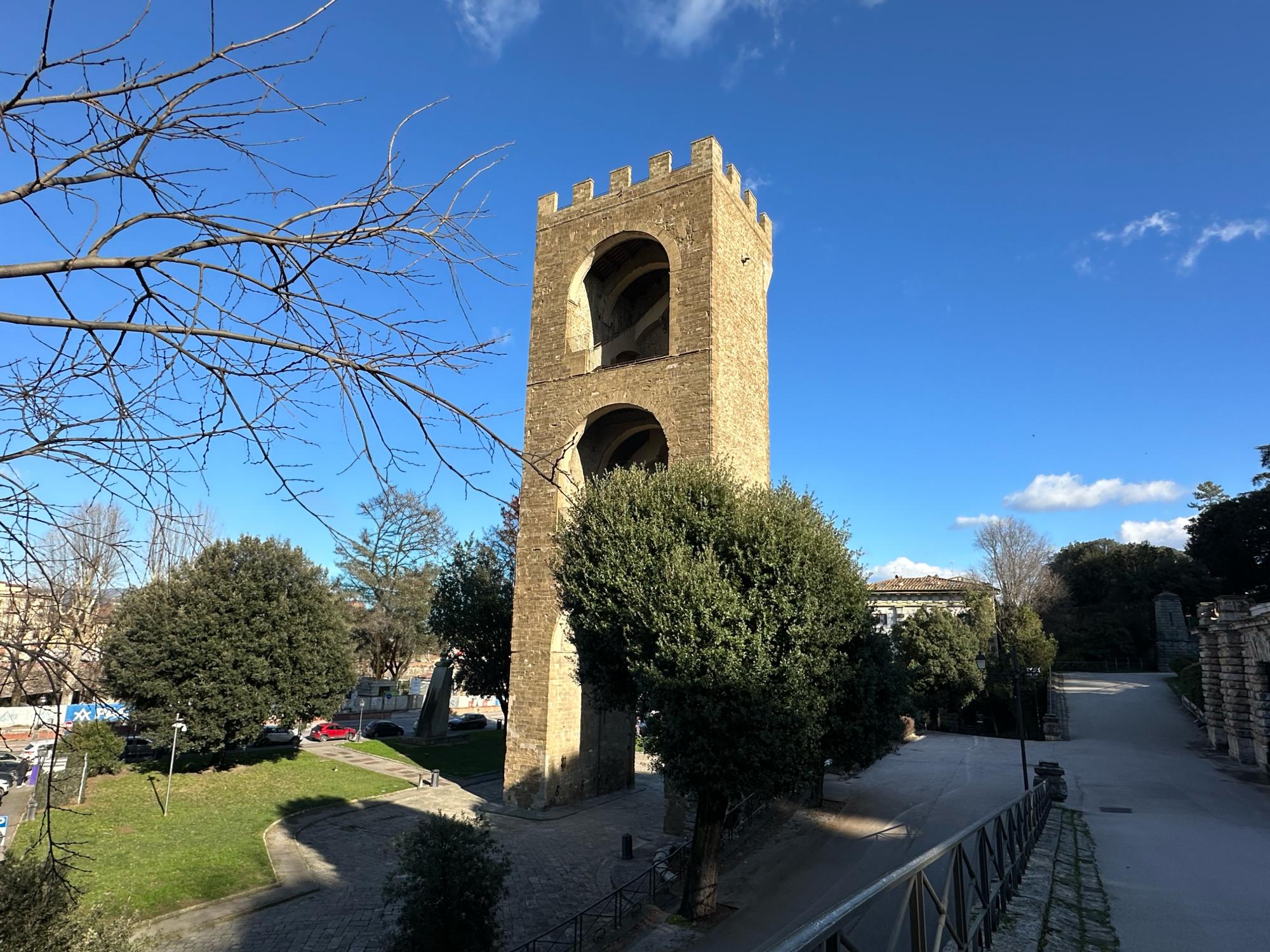
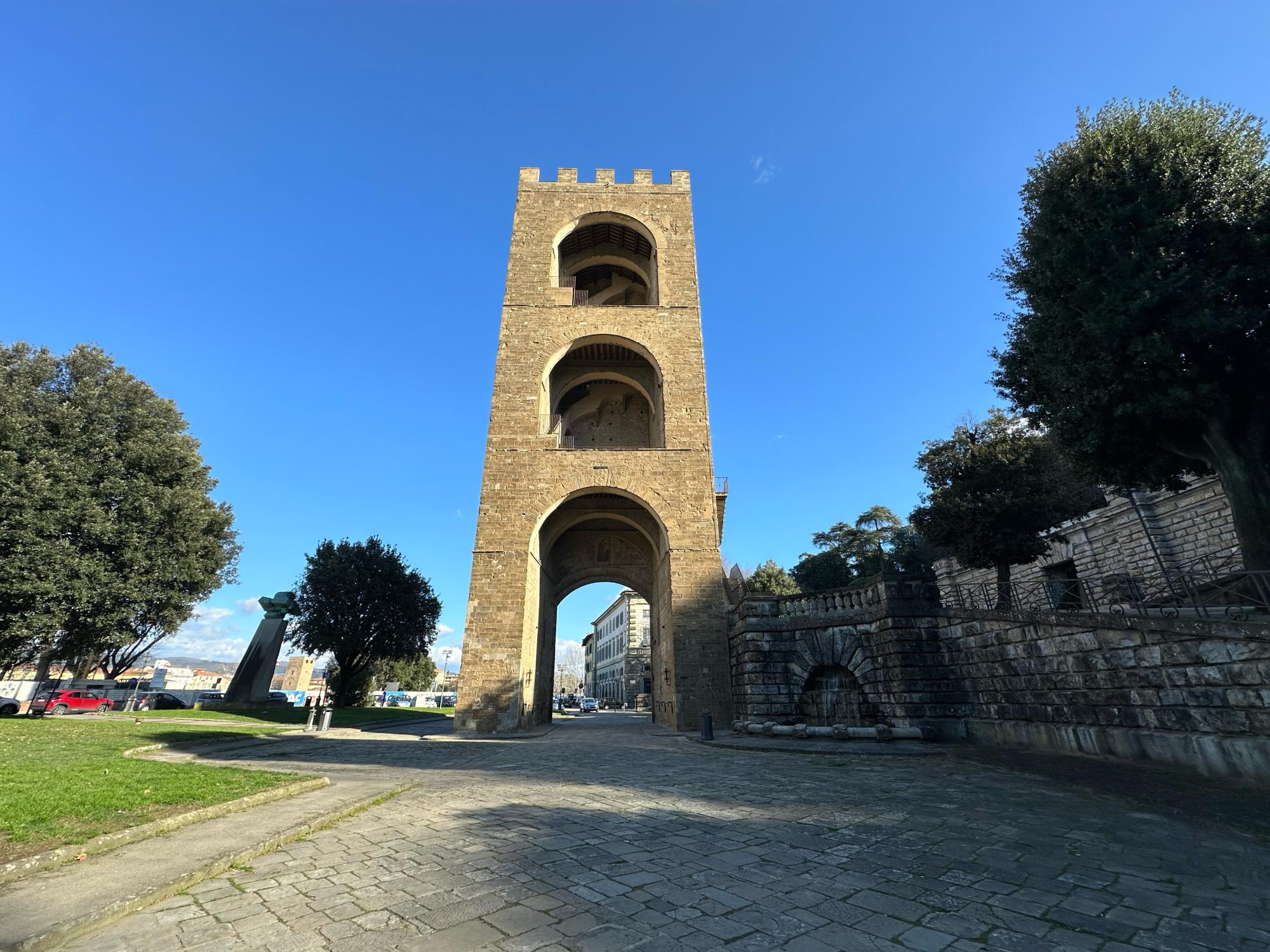
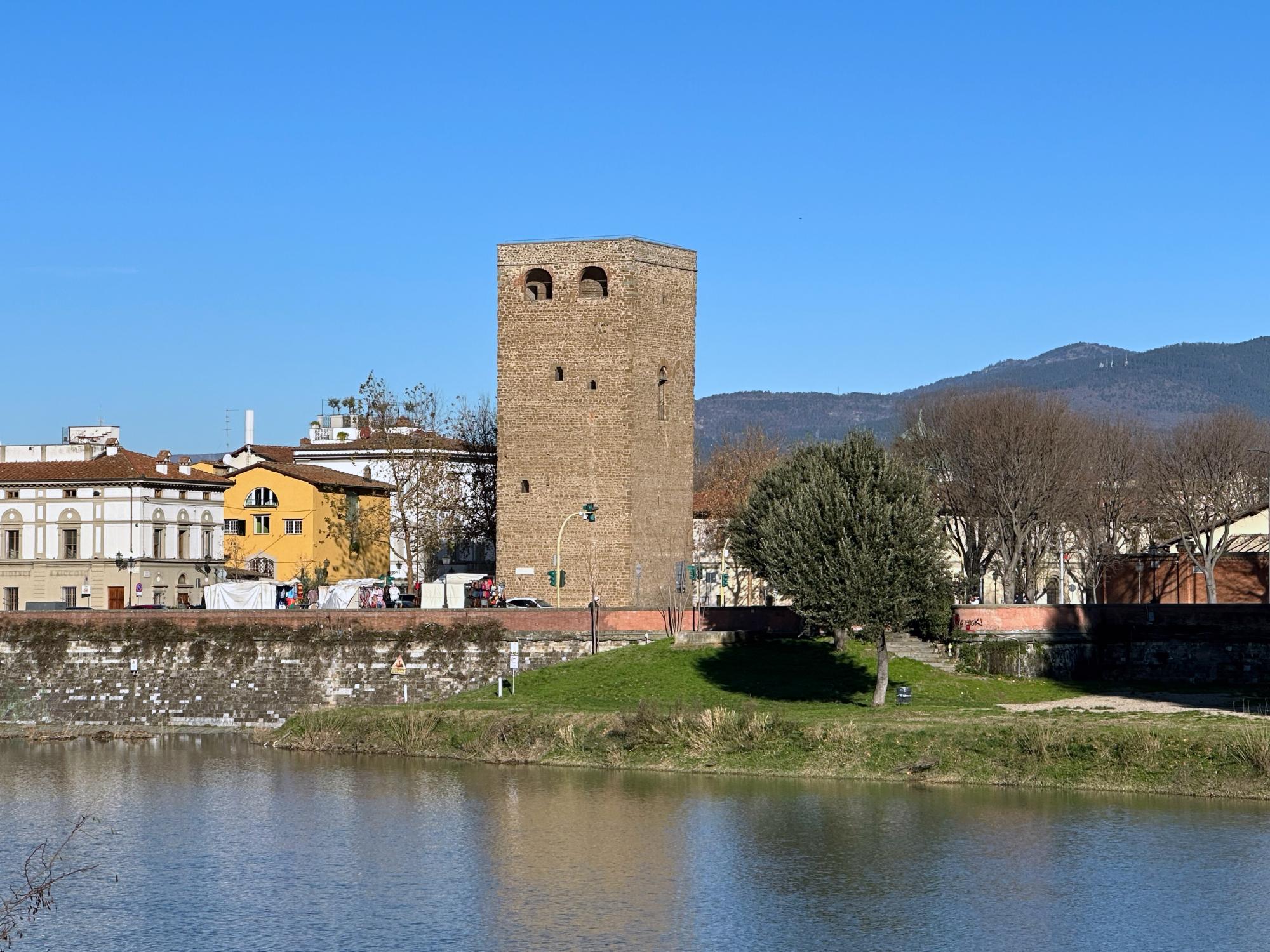
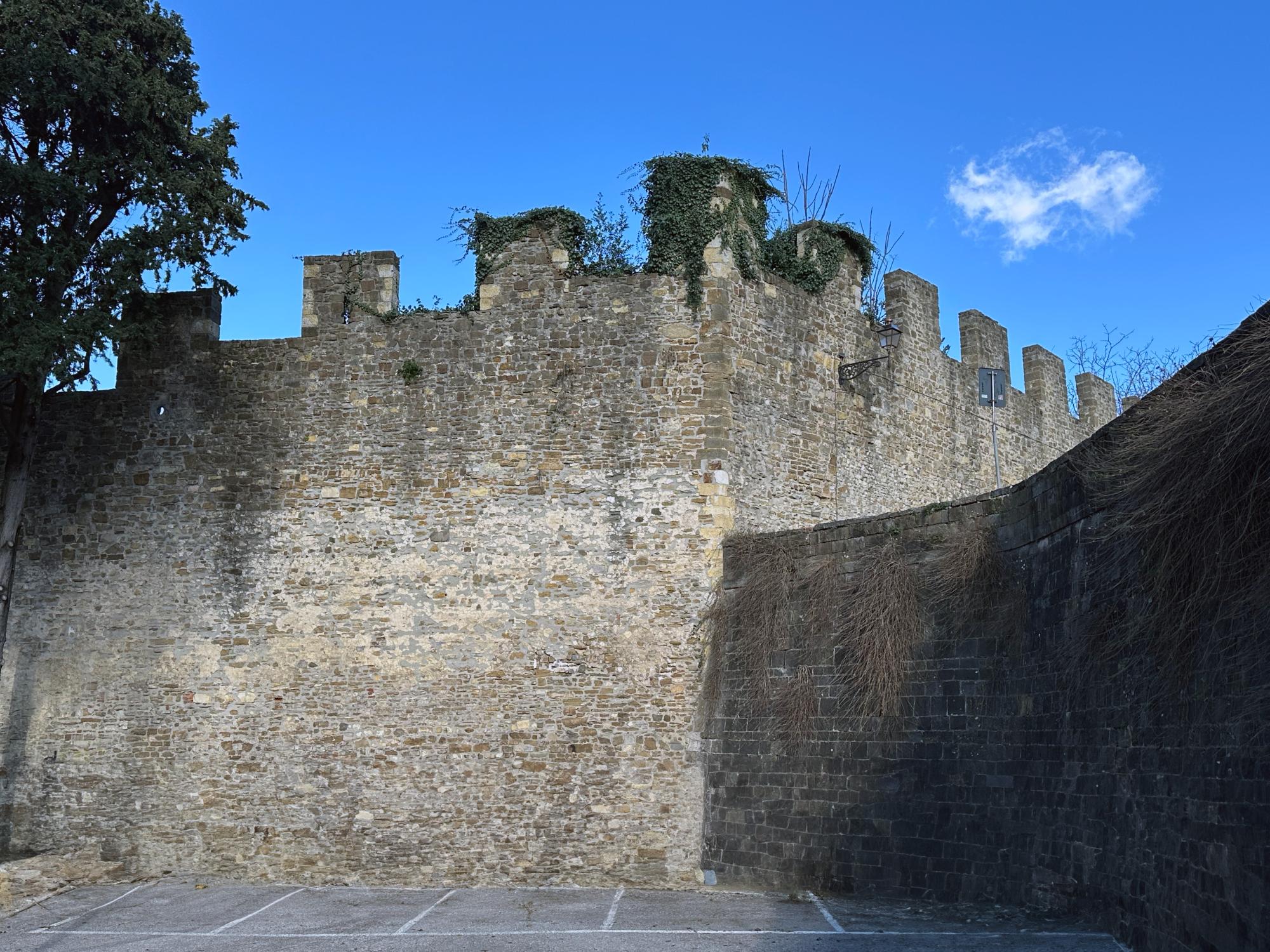
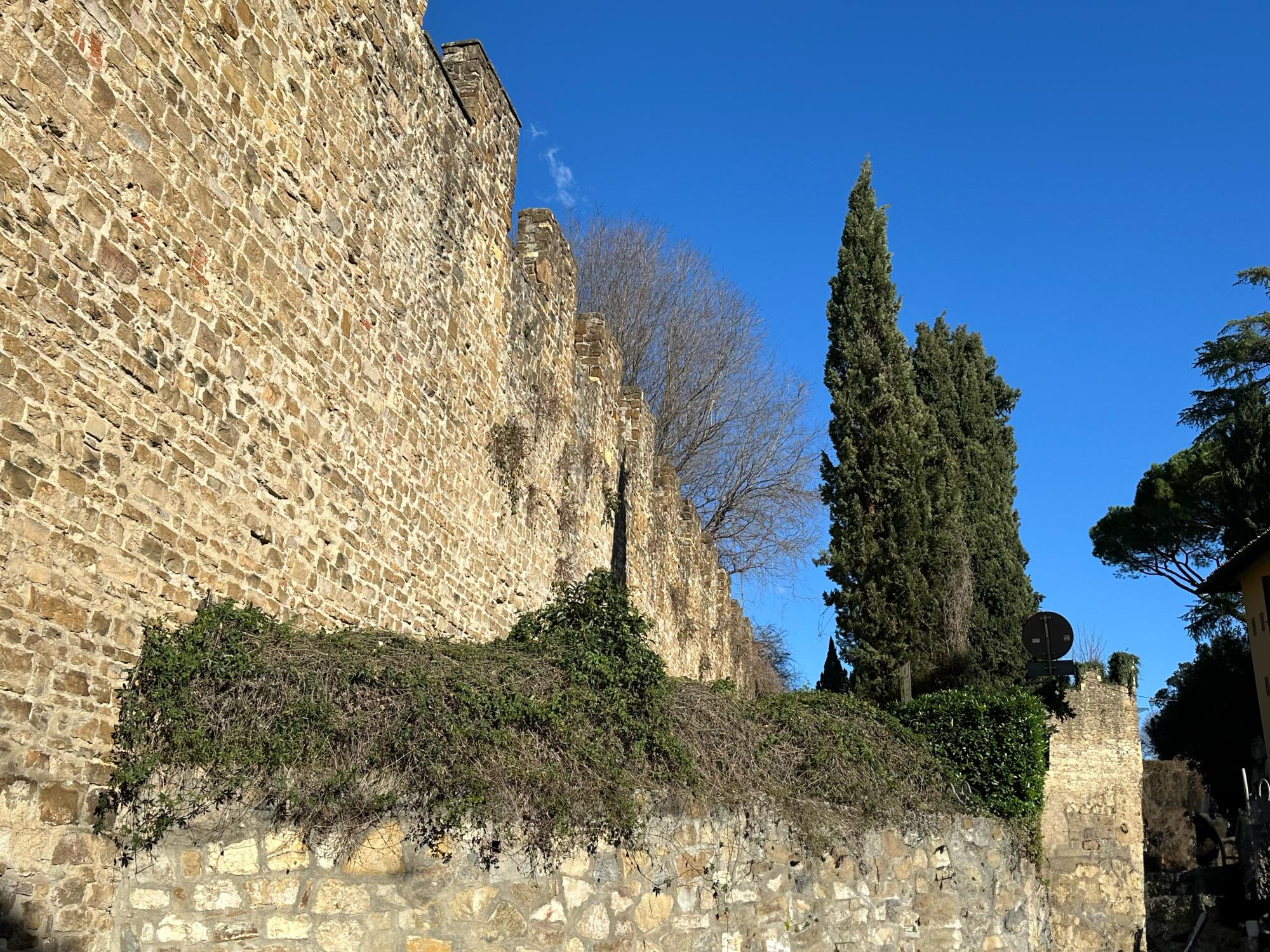
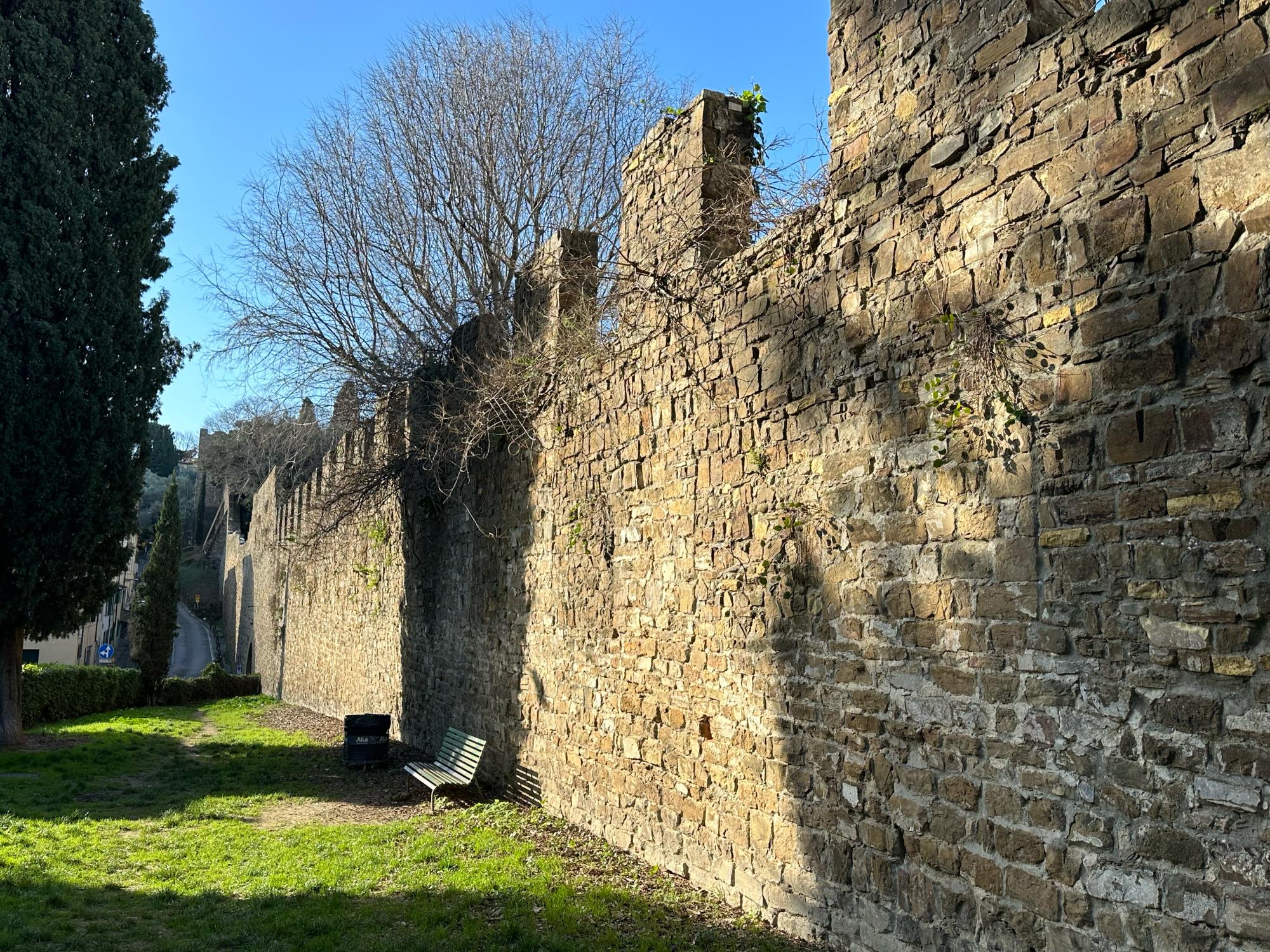
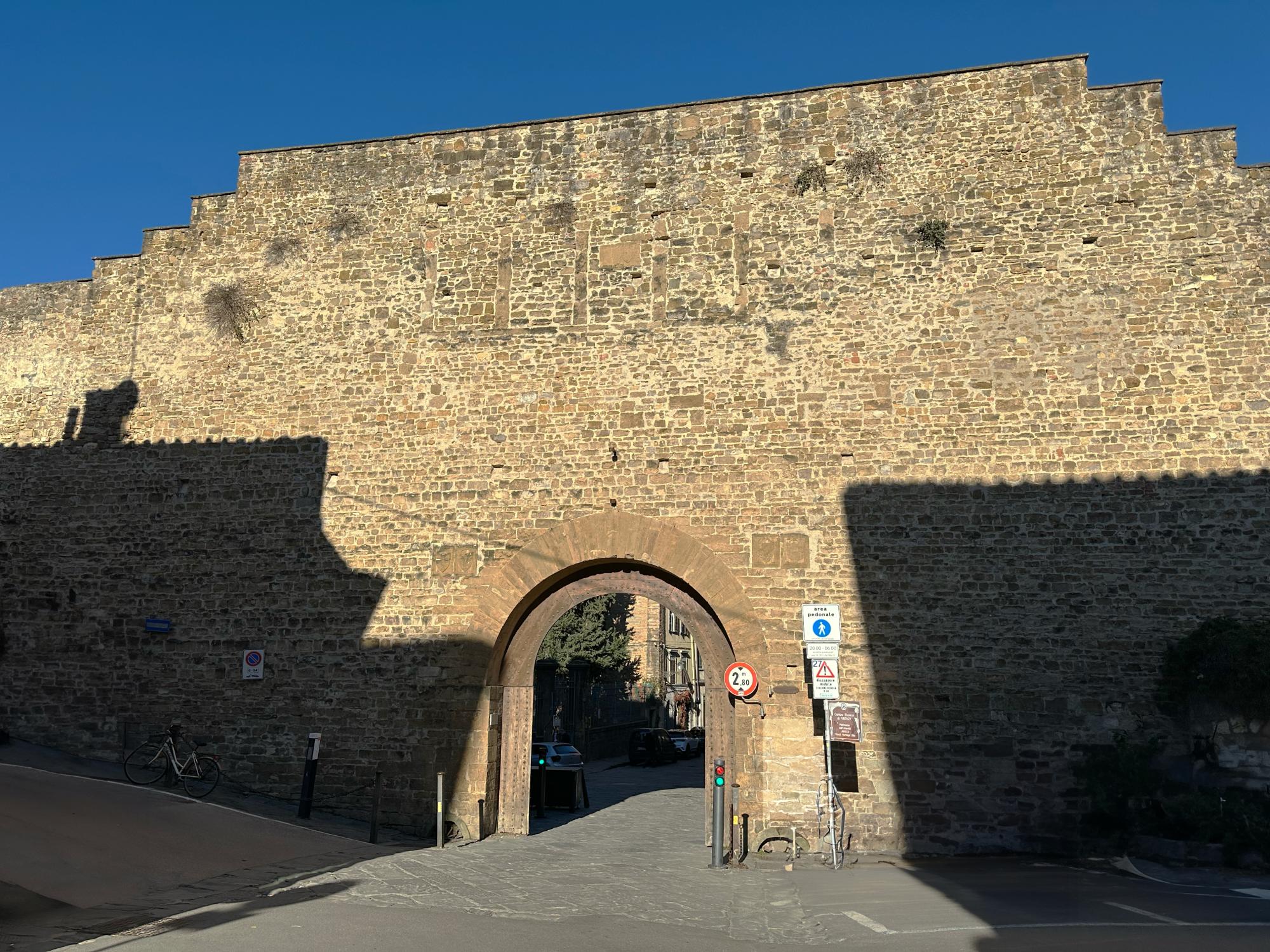
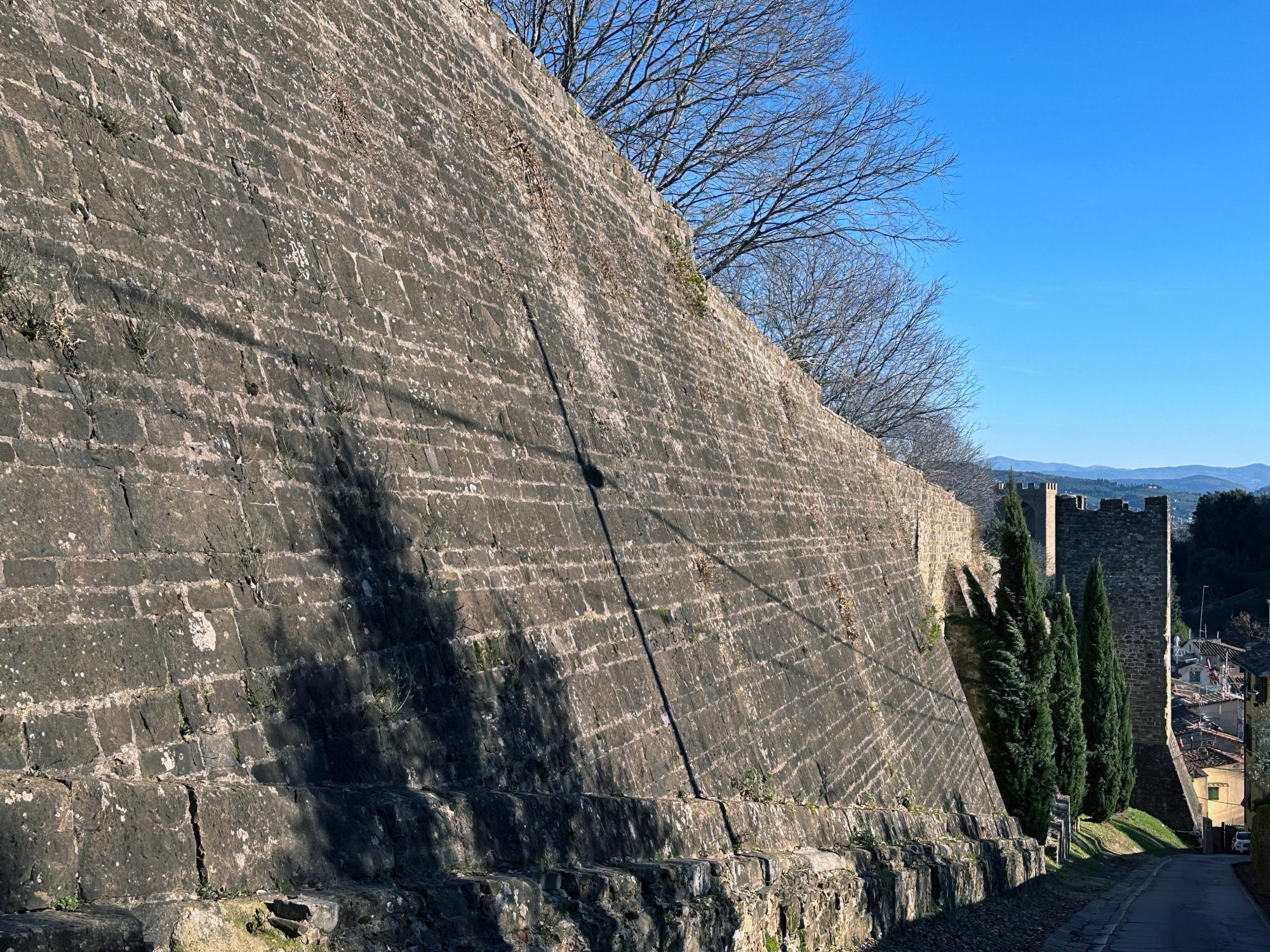
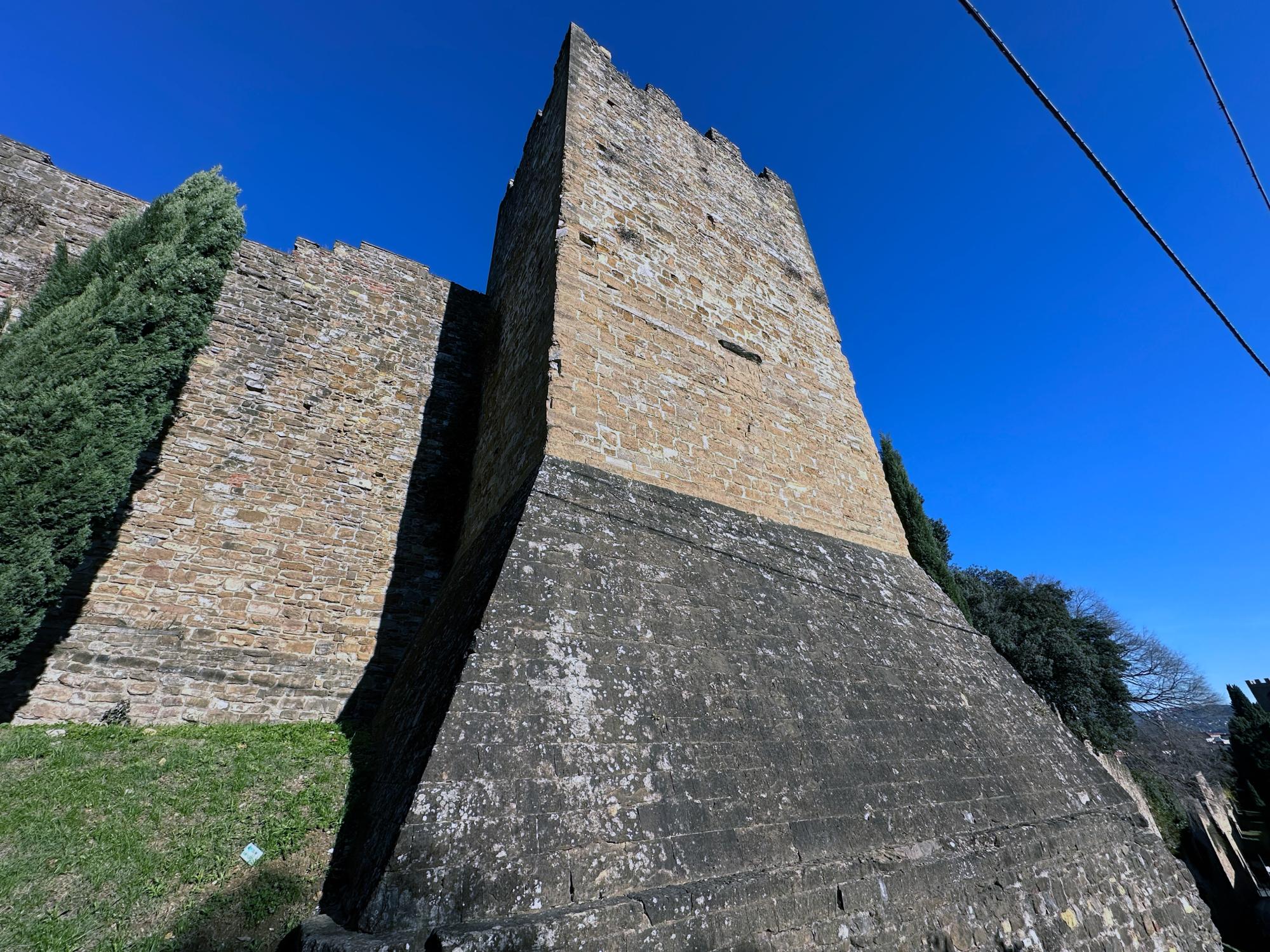
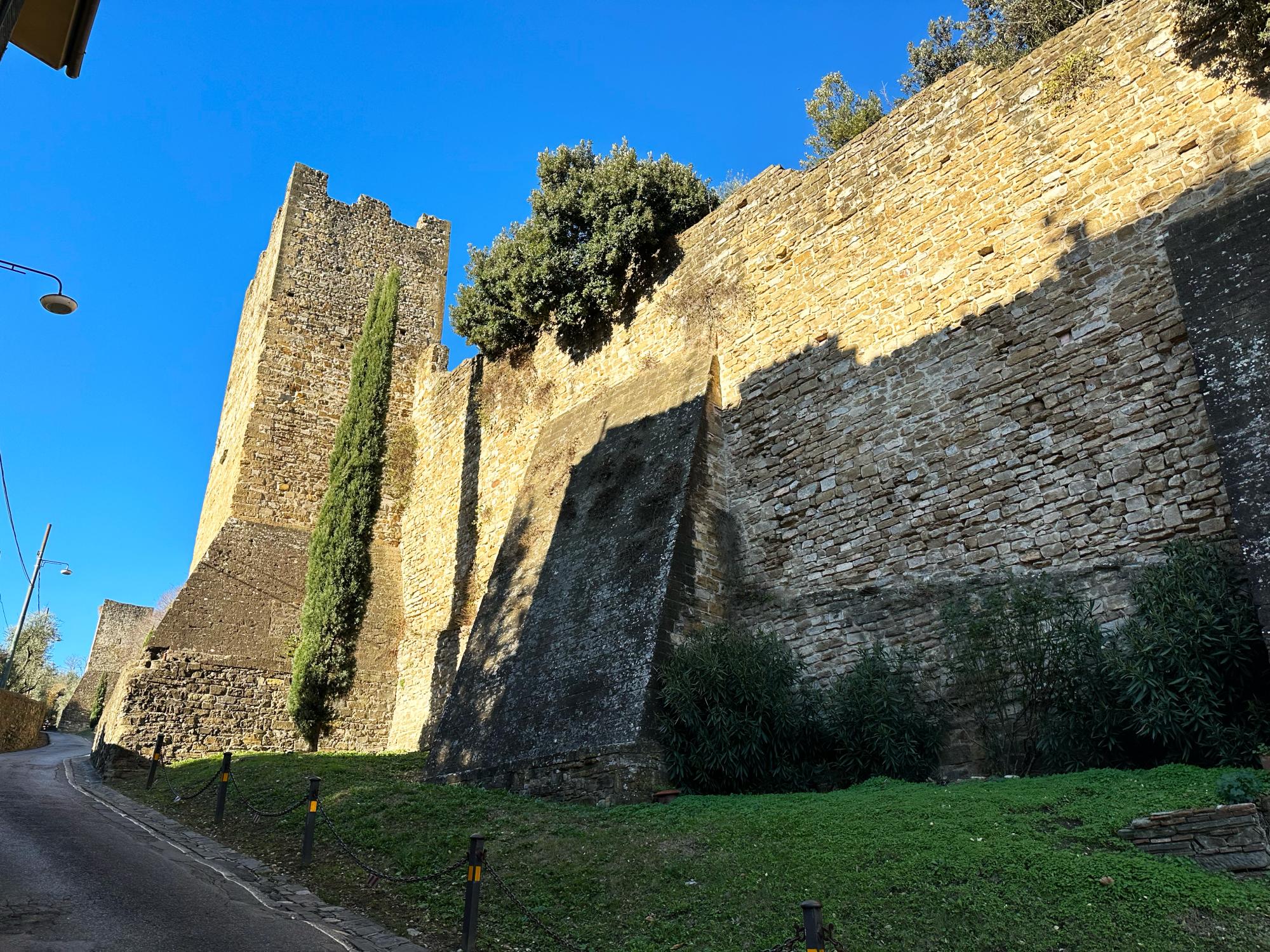

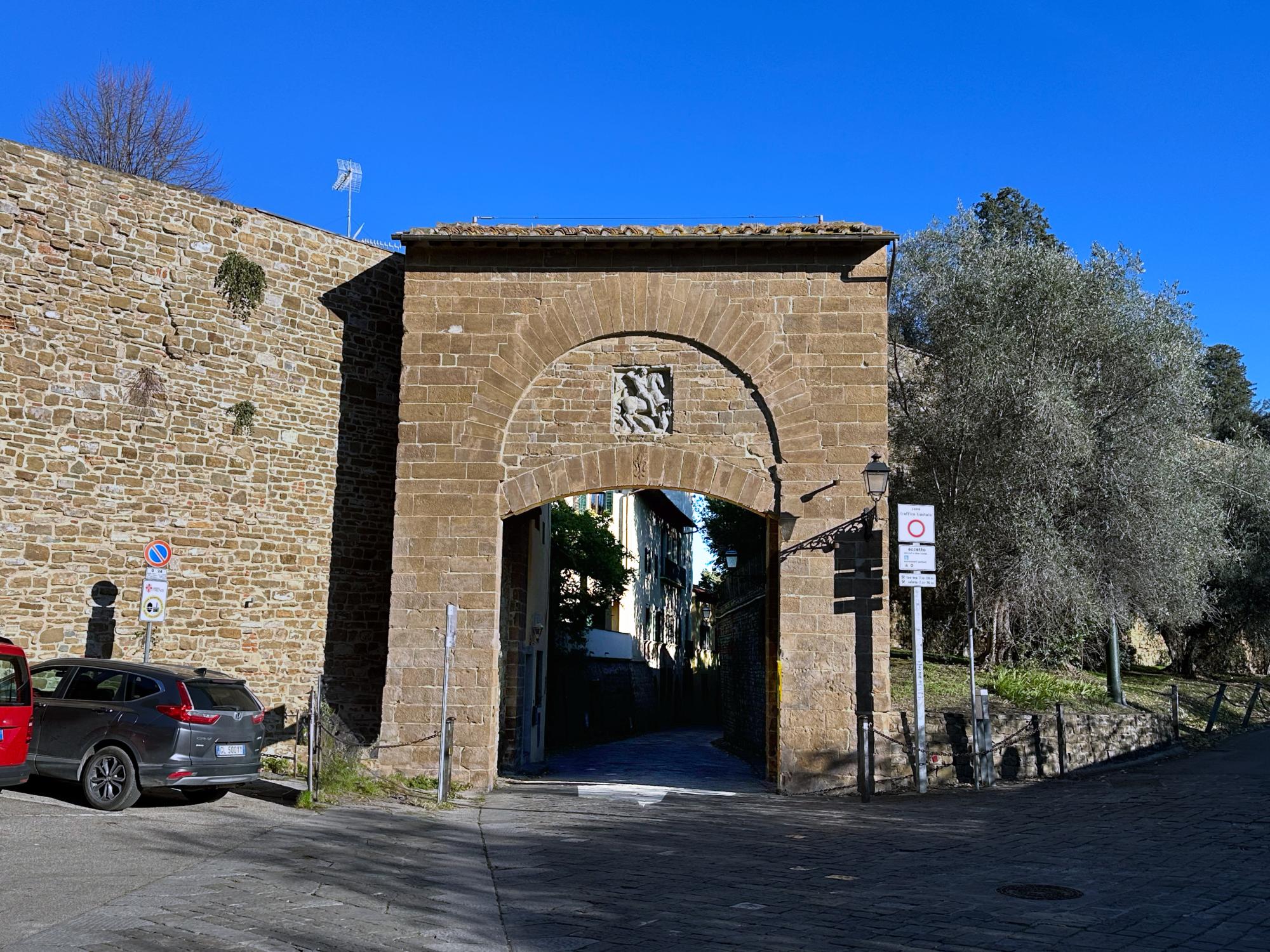
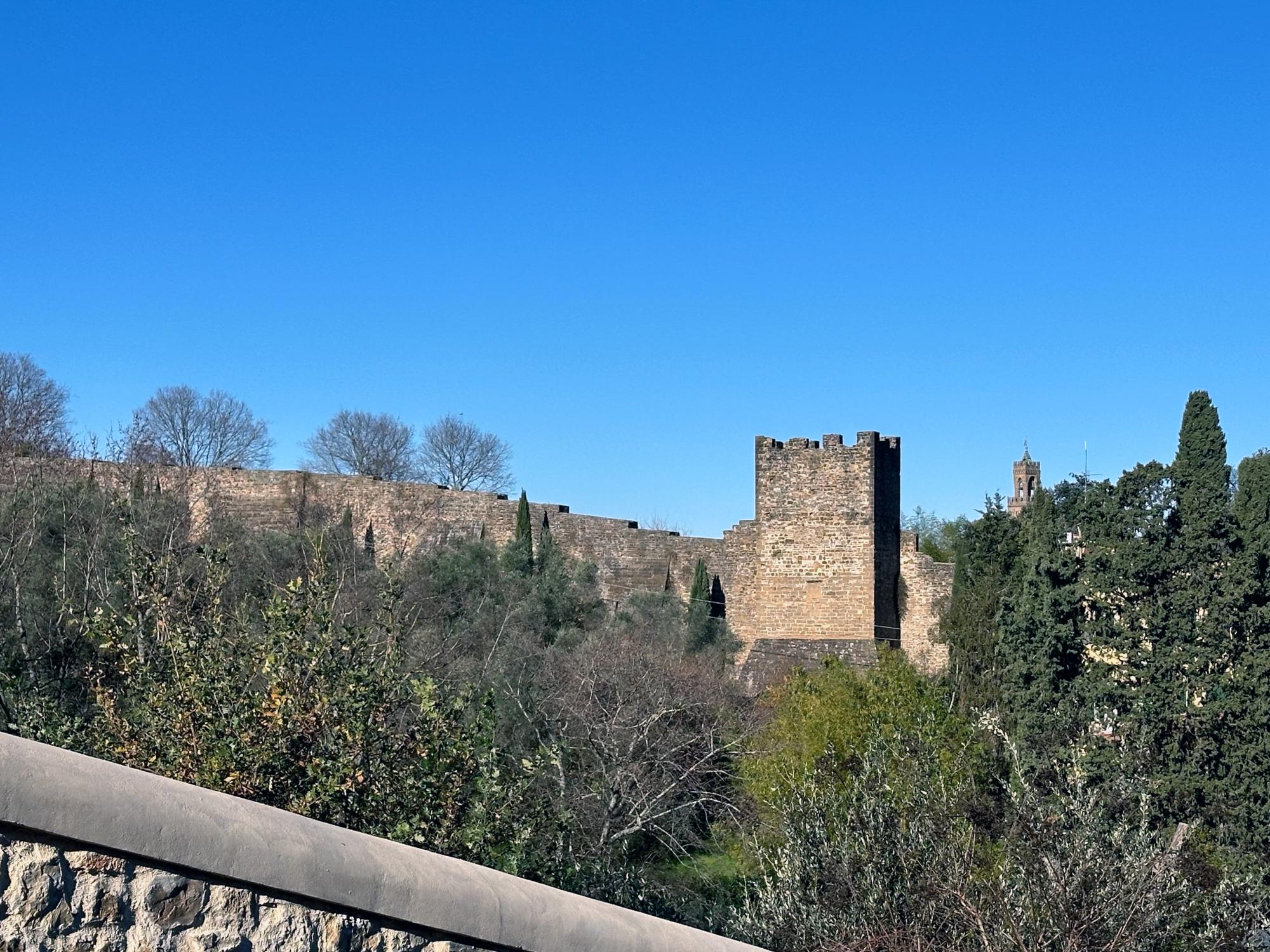
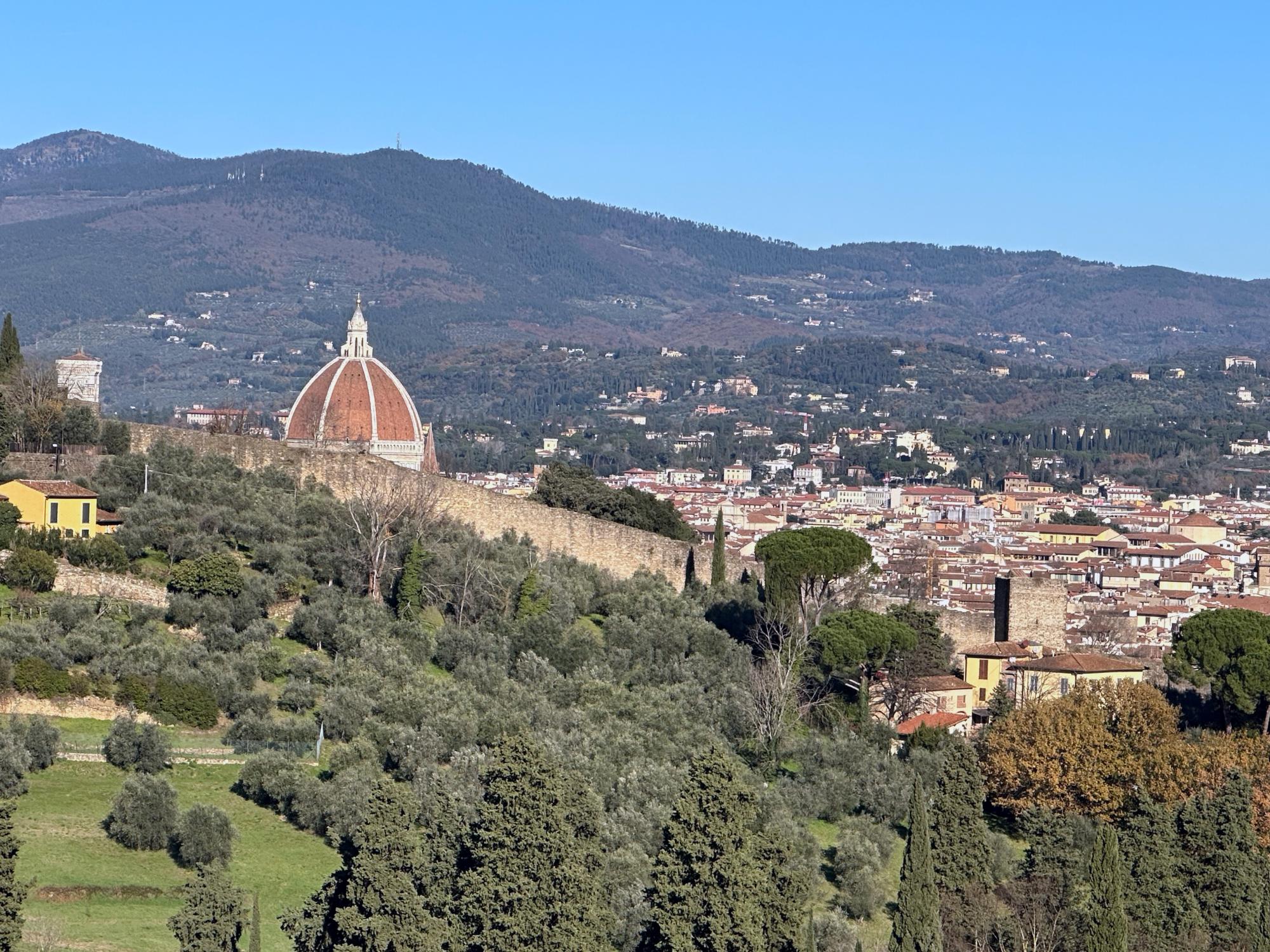
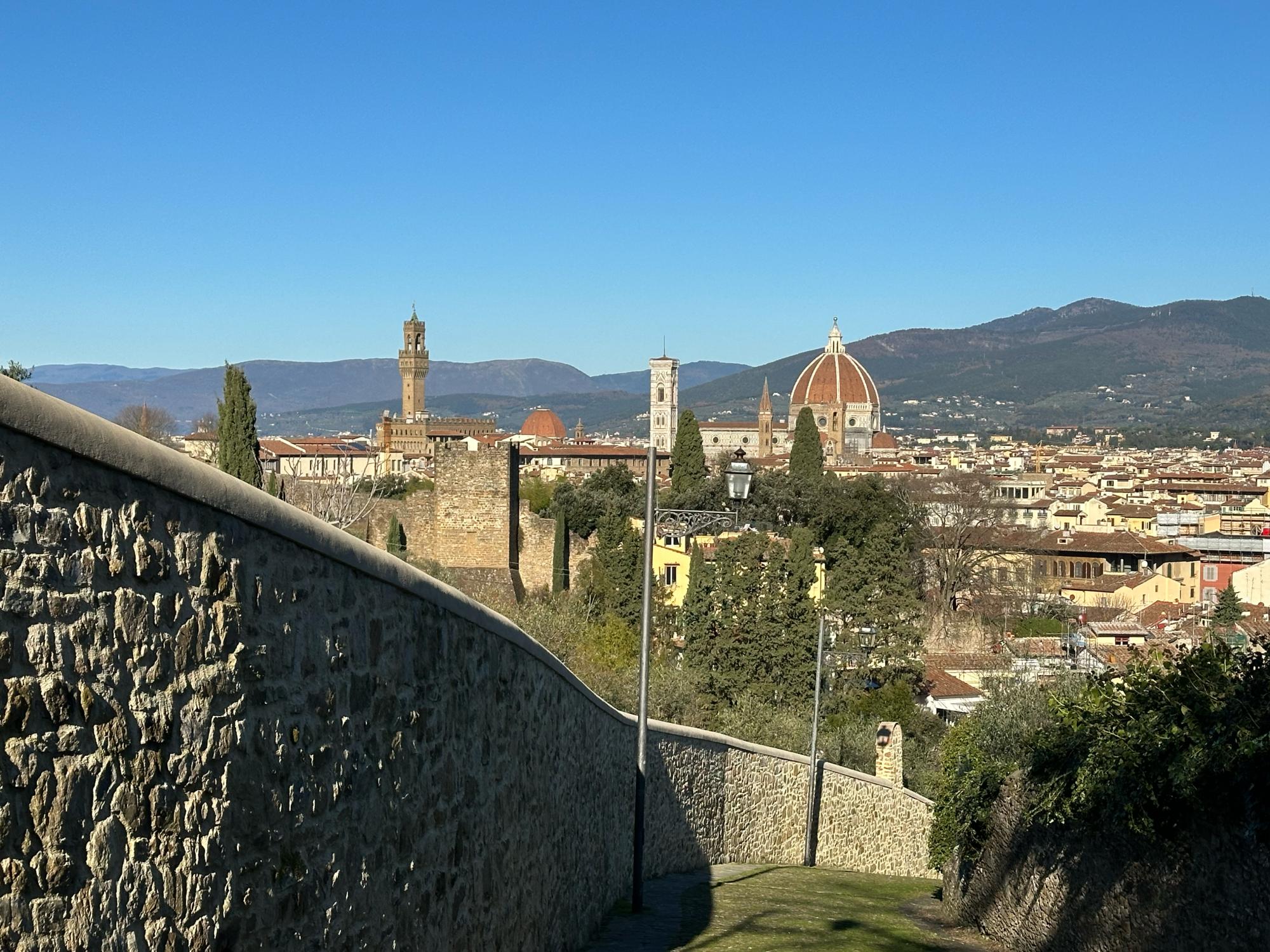
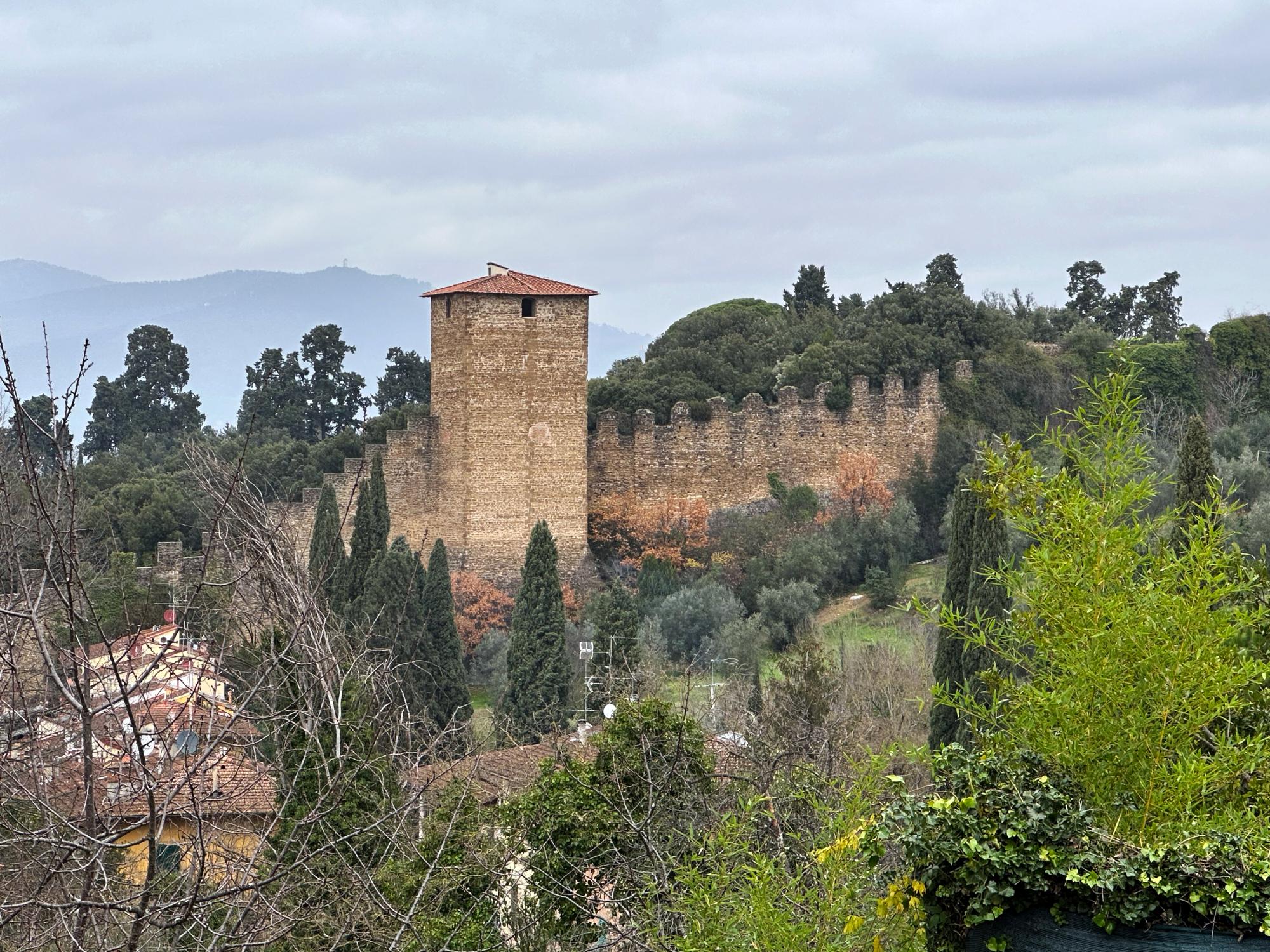
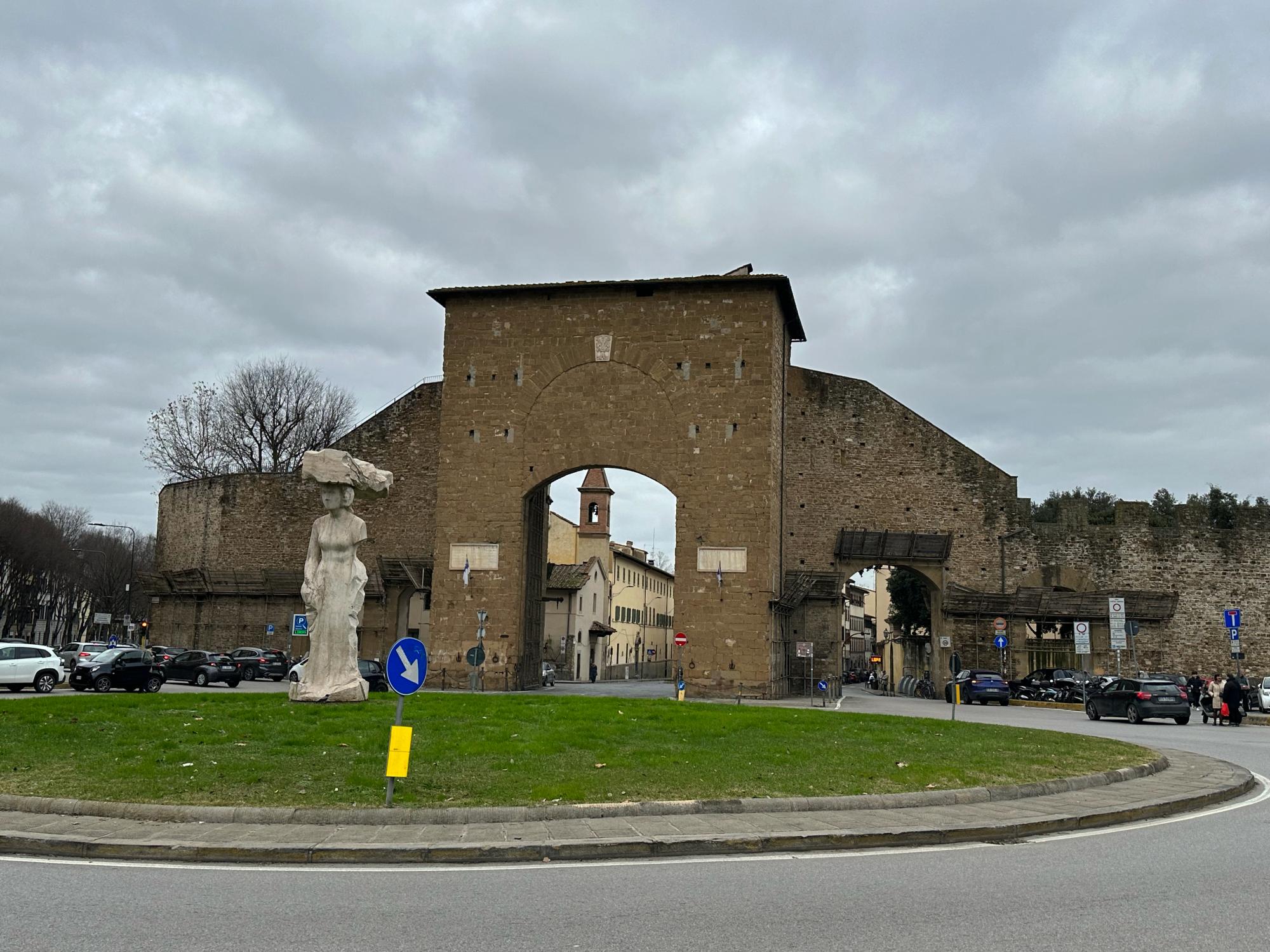
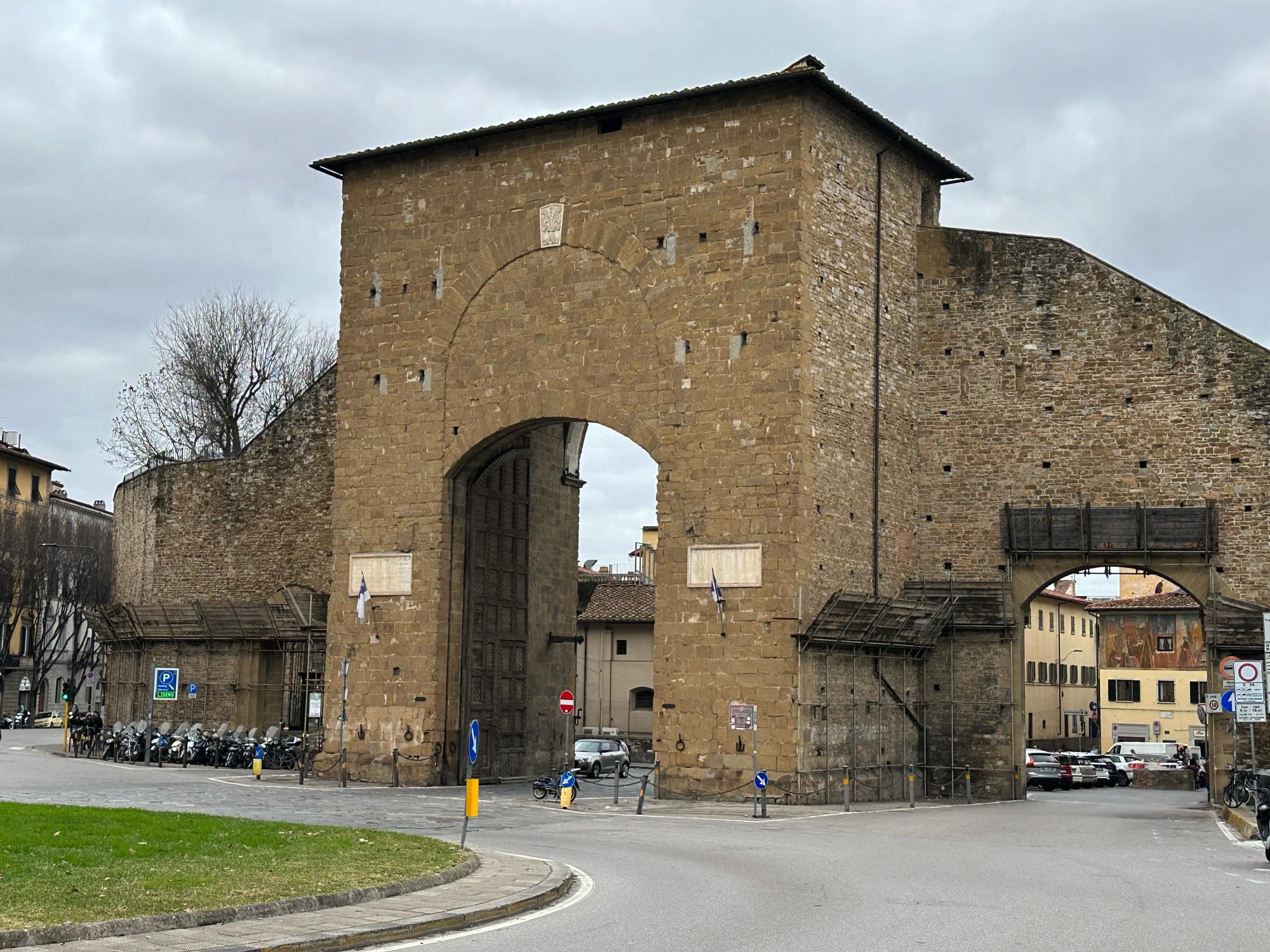
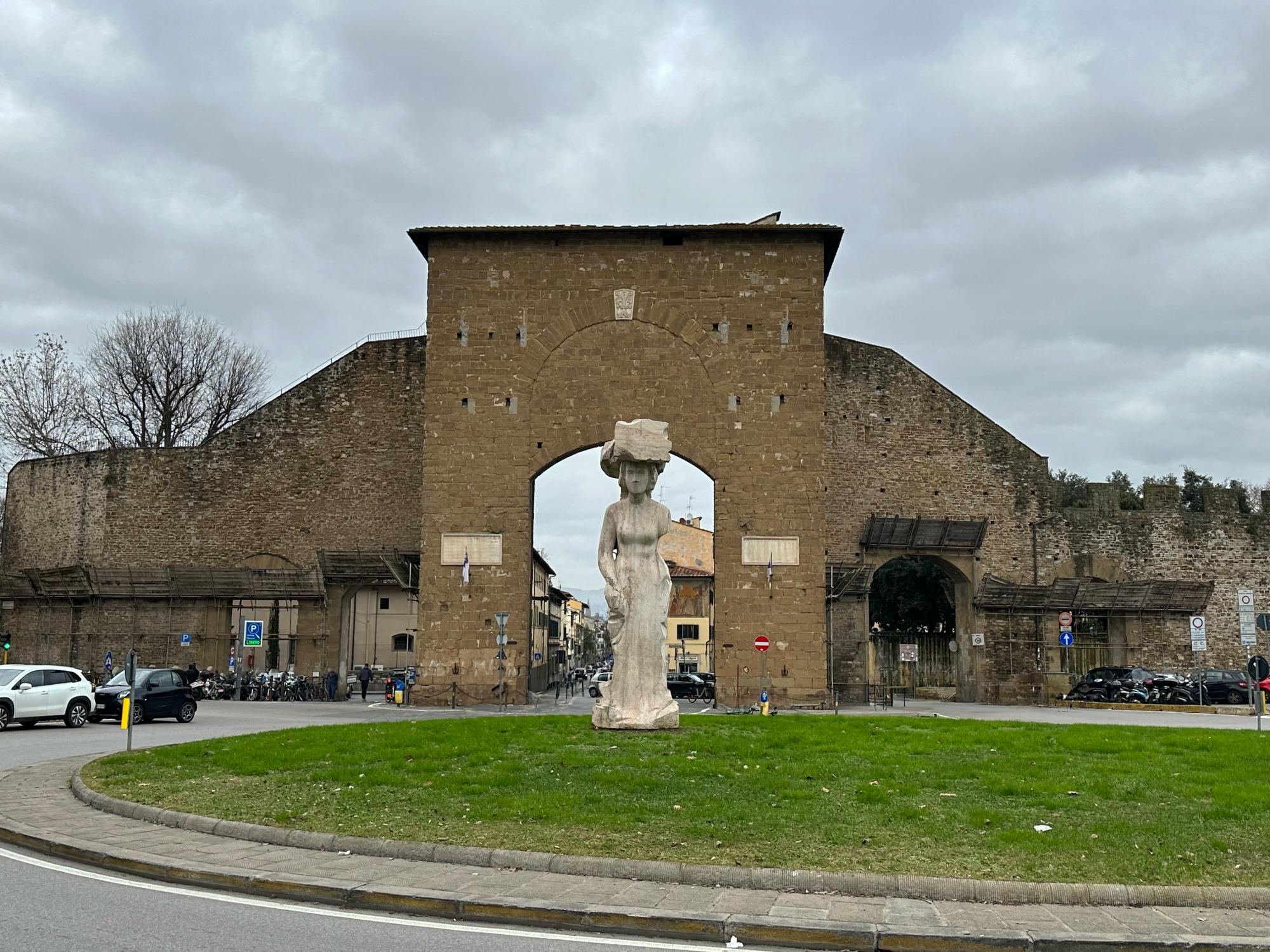
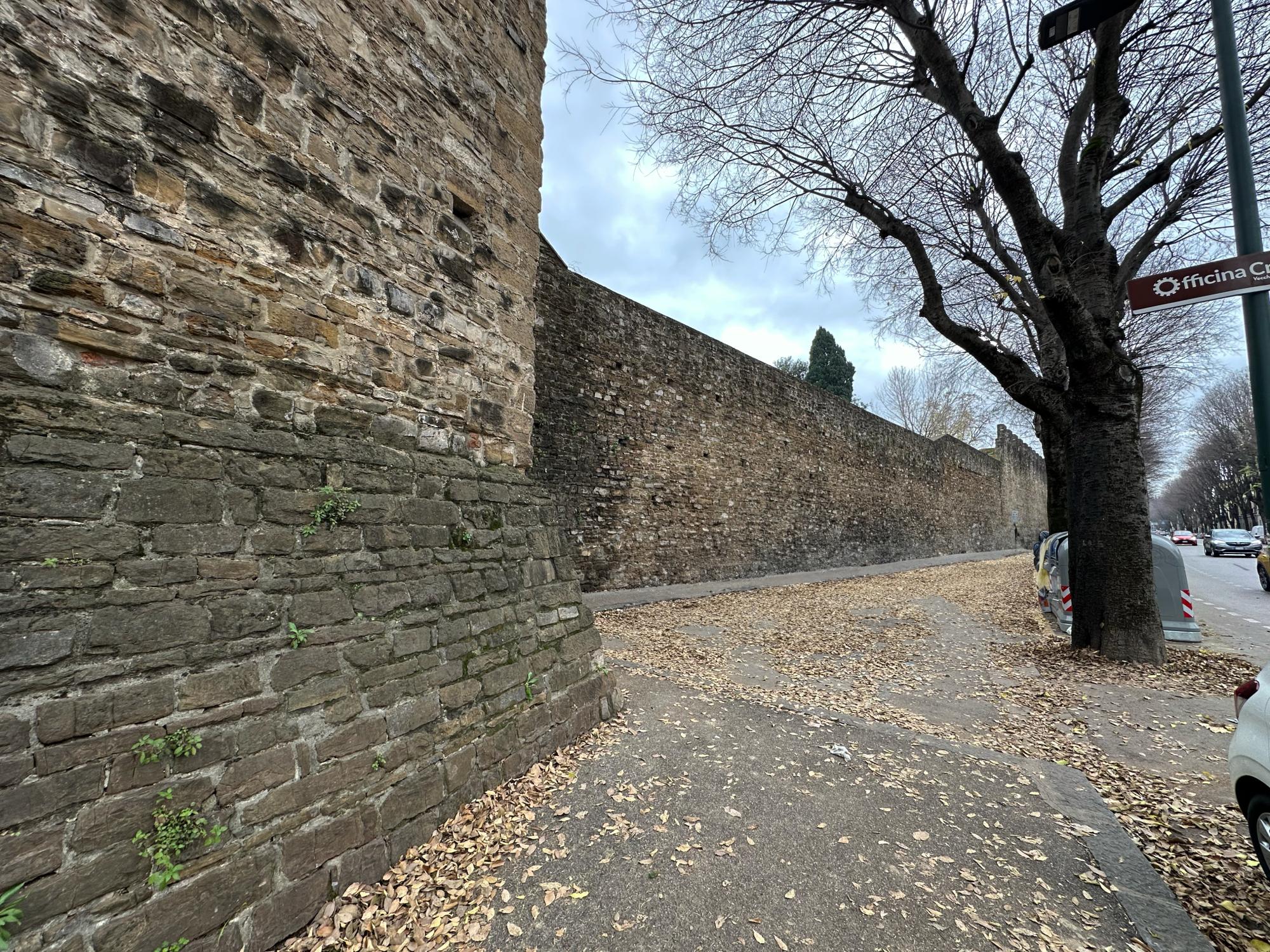
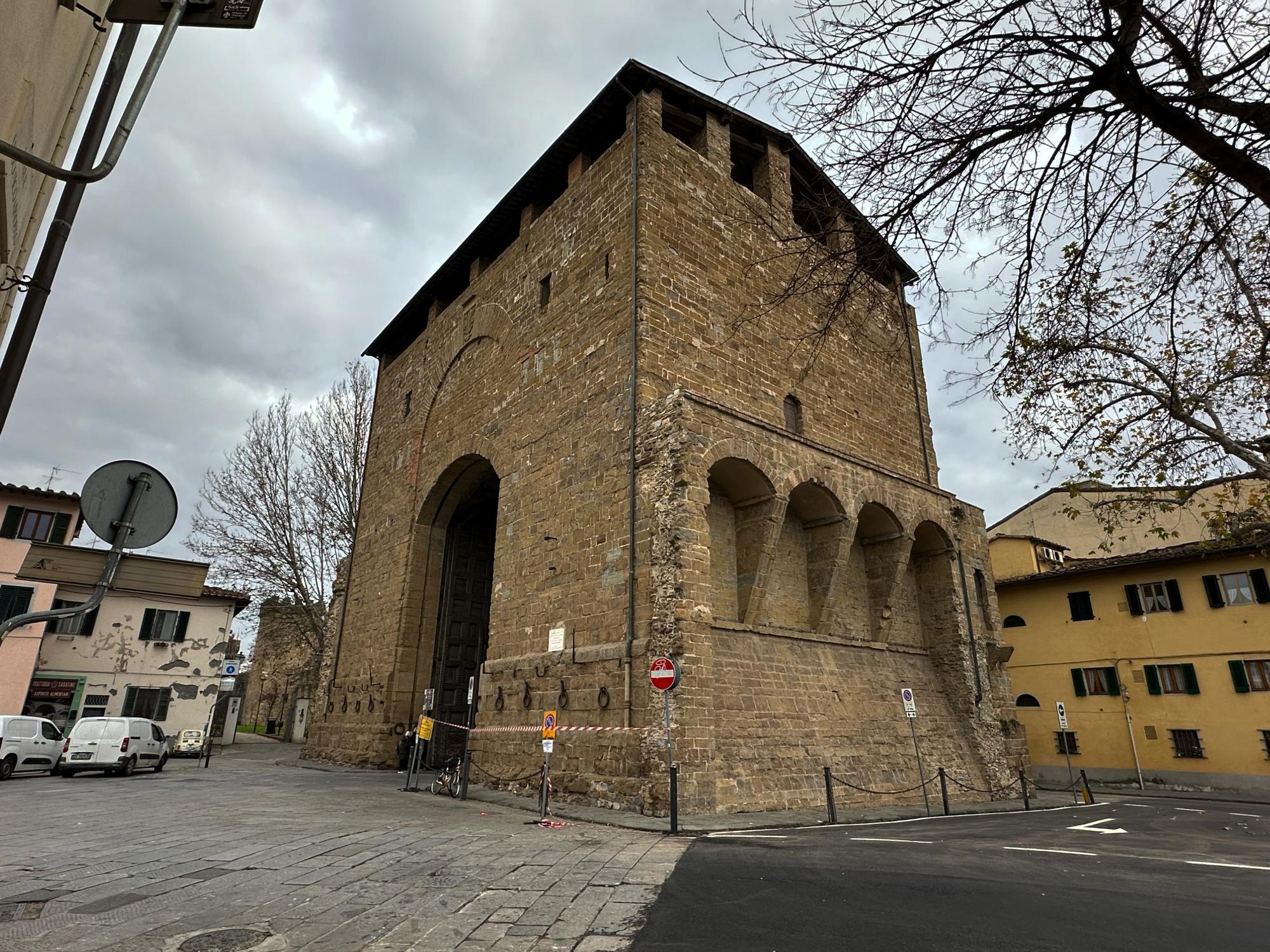
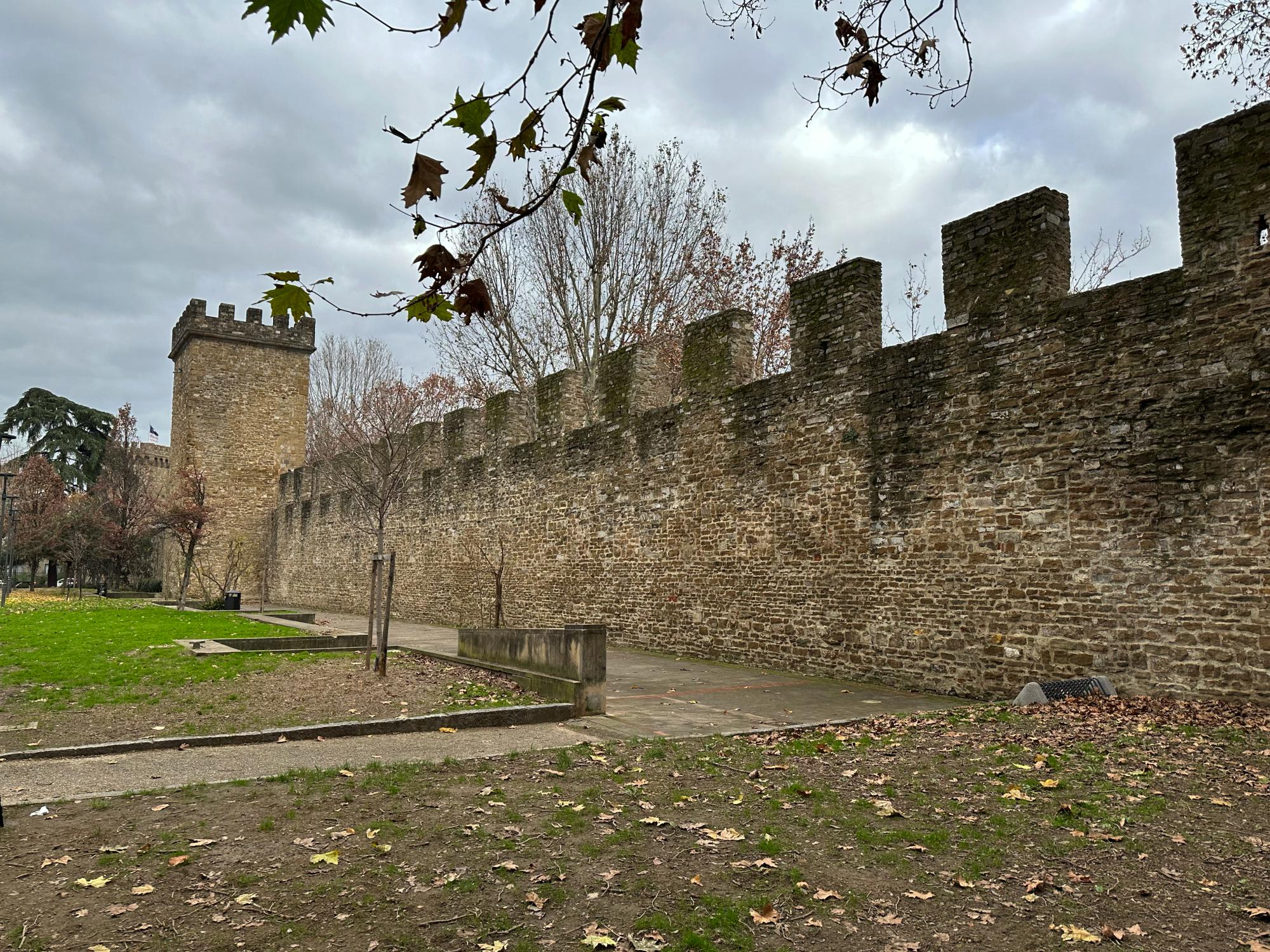
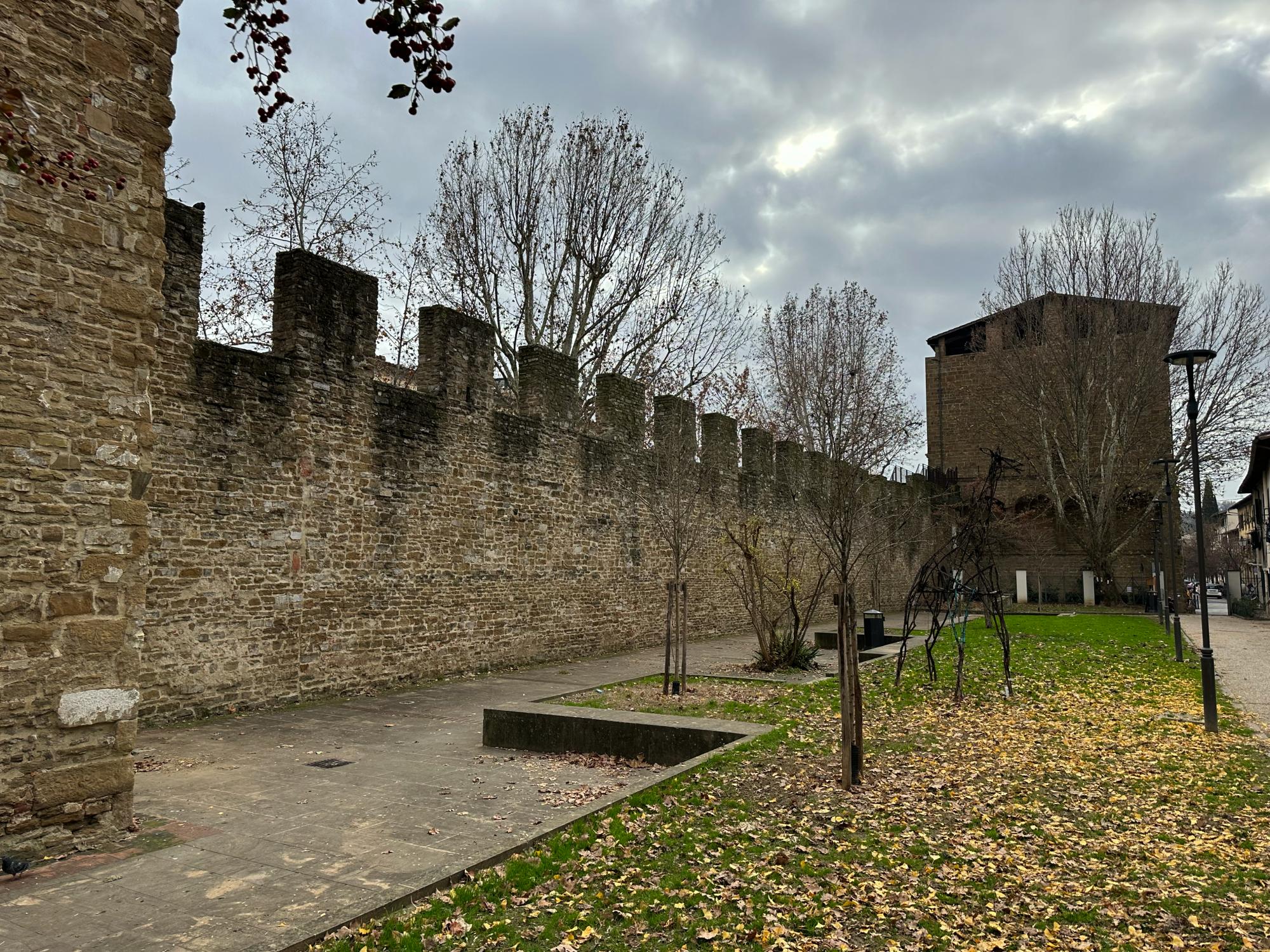
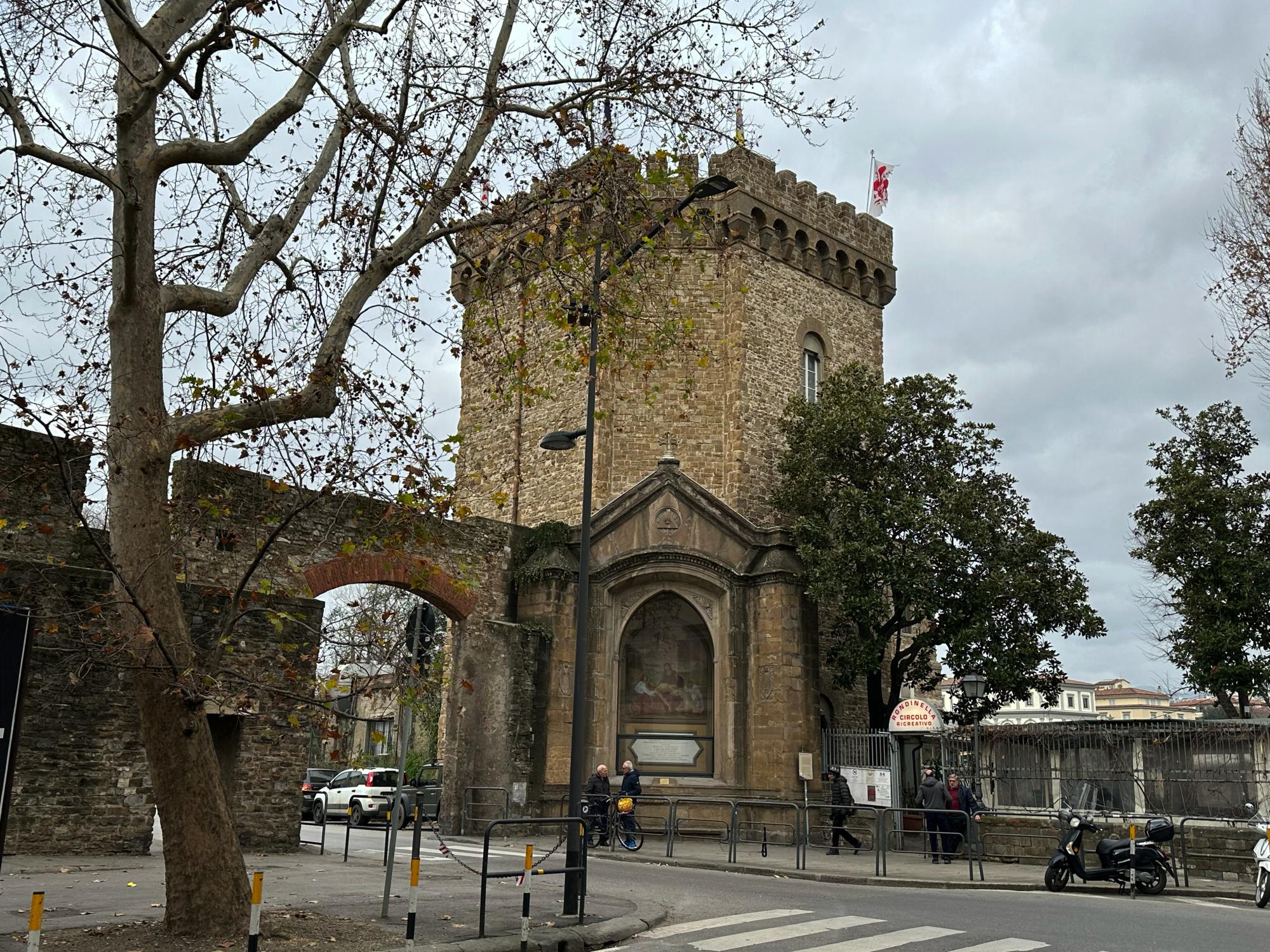

























How to reach
I recommend walking along what remains of the Fifth Circuit starting from Porta San Niccolò, then passing along Via Belvedere to Forte Belvedere and descending externally to the Boboli Gardens down to Porta Romana. From there, continue along Viale Aleardi to San Frediano, with its Porta and the Torrino di Santa Rosa. Along the avenues on the right bank, you will find the Monumental Gates.
History
The history of the walls of Florence unfolds in parallel with that of the city itself. Up to six different enclosures are accounted for, the latest of which dates back to the mid-16th century. The enumeration of the wall circuits is not unanimously accepted by all scholars. Some doubt the existence of the one referred to as the "second Byzantine circuit" and do not consider the Canossian reinforcement as the fourth new circuit, leading to a count of only four layouts instead of six. Others include the 16th-century enhancement as an additional layout.
The first Roman walls stood for almost a millennium, after which new walls followed at increasingly shorter intervals, testifying to the city's exponential demographic growth during a period of economic and social boom. From the Carolingian circuit (870), the city transitioned to the Matildine circuit (1078), then, just a century later, to the first Communal circuit in 1172, and a little over a hundred years later, to the second Communal circuit in 1284.
In the Middle Ages, Florence was equipped with a defensive wall that enclosed what is now the historic center
In the last century, during the renovations that followed the city's rise to become the capital of the Kingdom of Italy, the entire section of the northern part to the right of the Arno, excluding the gates, was demolished. It was replaced by the current Ring Roads, along which only the main entrance gates to the city remain.
In the southern part of the city, located on the left bank of the river in Oltrarno, there are still notable traces of the city's defensive circuit. These walls, along the stretch of Viale Aleardi and Porta Romana, have undergone restoration, leading to the reopening of some sections of the walkway. From there, one can enjoy a different view of the city's beauties.
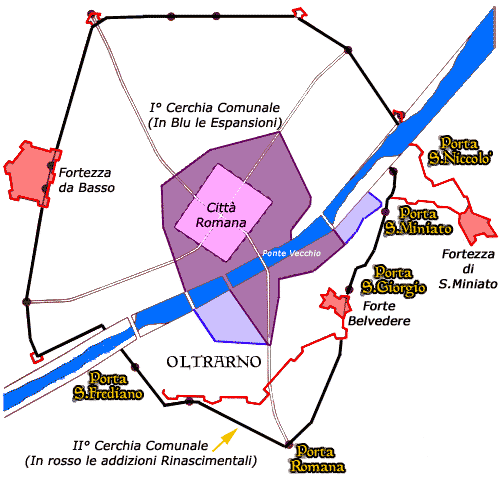
The construction of the second Communal circuit (the fifth circuit, further reinforced in the 16th century), replacing the first built in the years 1173–1175, began on January 2, 1285. In total, the new walls measured 8500 meters, were six meters high, and featured Guelph merlons, with 63 break-trough towers and 12 monumental gates (each equipped with an antegate and drawbridge). They enclosed an area of 430 hectares, five times larger than the previous enclosure. The magnitude of the project was necessary to cope with the city's significant demographic and construction expansion.
It is estimated that in 1125, Florence had 25,000 inhabitants; by 1280, it reached 80,000, and nearly 100,000 in the early 1300s
This city wall was designed to be one of the widest, most powerful, and best-defended of its time, ultimately becoming one of the most formidable fortified walls in Europe. The walls were equipped with a moat in several places, fed in the north by the waters of the Mugnone, a small tributary of the Arno, whose course was diverted for this purpose.
The technical planning and realization of this ambitious urban project involved the contributions of renowned architects such as Arnolfo di Cambio, Giotto, and Andrea Pisano. Due to various interruptions for wars, the walls were only completed in 1333.
The 16th-century enhancement, featuring contributions from illustrious figures like Michelangelo and Antonio da Sangallo il Giovane (the Younger), involved the addition of bastions (all dismantled in the 19th century except the bulwark at San Giorgio along via Belvedere) at the corners and strategic points of the layout. The gates (except for San Niccolò) were beheaded to prevent them from collapsing if hit by cannons. Additionally, two new bastioned fortresses were built: San Giovanni Battista (or Da Basso) on the northwest front and Santa Maria in San Giorgio del Belvedere (Forte Belvedere) on the highest point of the Boboli hill in the southeast.